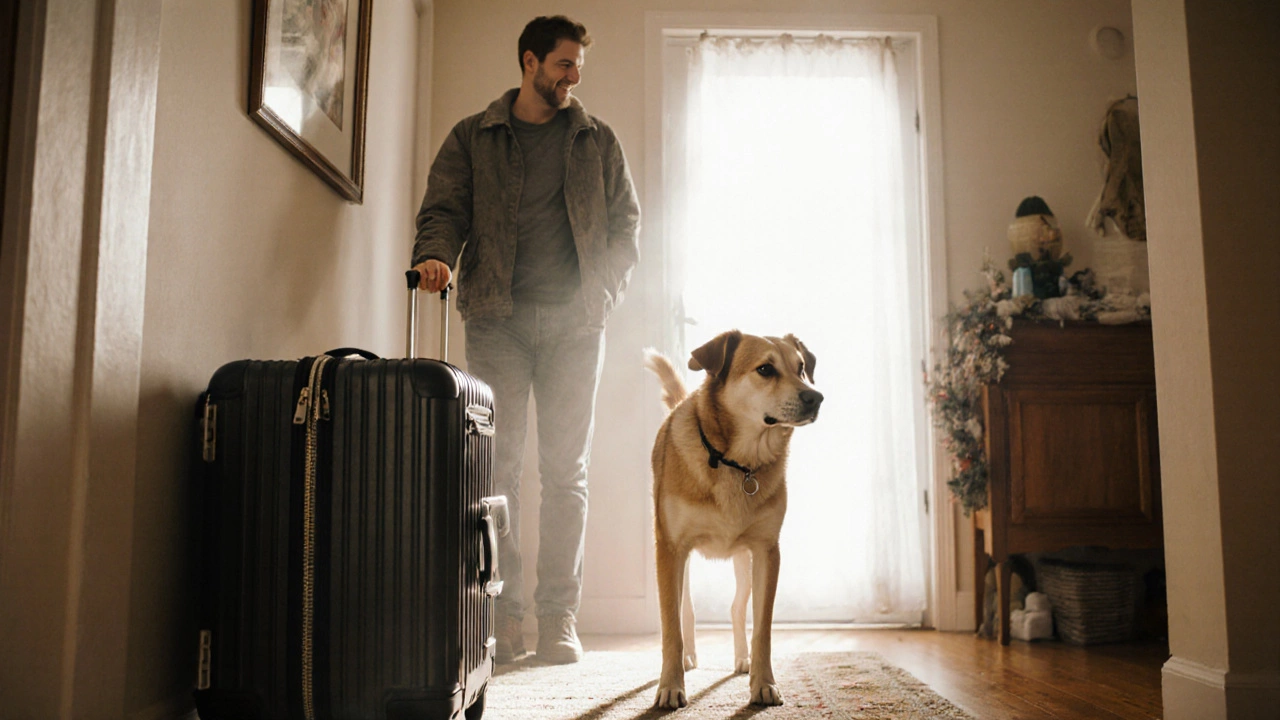Dog Separation Anxiety: Understanding & Helping Your Pup
When working with dog separation anxiety, a stress reaction that shows up as barking, pacing, or destructive behavior the moment you walk out the door. Also known as separation anxiety in dogs, it signals that a canine’s emotional wellbeing is tied to your presence. Recognizing the signs early lets you act before habits harden. Dog separation anxiety isn’t just a nuisance—it can damage teeth, furniture, and your dog’s confidence.
One of the first tools many owners turn to is calming treats, nutrient‑rich snacks formulated with ingredients like L‑theanine or chamomile to lower stress hormones. These treats work by influencing the brain’s serotonin pathways, which helps calm the nervous system. When paired with a predictable feeding schedule, pets learn to associate the treat with a safe, relaxed state. This simple nutritional tweak can reduce the intensity of the anxiety response, making training sessions smoother.
But treats alone won’t solve the problem. behavior training, structured exercises that teach a dog to tolerate alone time through gradual desensitization is essential. Start with short departures—just a few seconds—and reward calm behavior. Slowly extend the interval, always ending on a positive note. This method requires patience, but the payoff is a dog that can sit quietly while you’re out, reducing the need for constant supervision. In practice, behavior training and calming treats complement each other: the treats lower the stress ceiling, while training lifts the confidence floor.
A broader view includes anxiety relief techniques, daily routines like regular exercise, puzzle toys, and a consistent schedule that give dogs predictable cues. Physical activity burns excess energy, which otherwise fuels nervous pacing. Puzzle toys keep the mind occupied, preventing the mental loop that fuels worry. Keeping departure and return times consistent also tells the dog that leaving is a normal, short event, not a catastrophe. Together, these techniques create an environment where the dog feels secure even in your absence.
All of these pieces—calming treats, behavior training, and daily relief techniques—fit into the larger concept of canine anxiety, a spectrum of stress responses that can affect any dog, not just those with separation issues. Understanding that separation anxiety is one facet of this spectrum helps you spot other stress signals, like trembling or excessive licking, before they become entrenched. By addressing the root causes and providing multiple layers of support, you give your dog the best chance to stay calm, happy, and healthy when you’re not around.
Below you’ll find a curated set of articles that break down each of these areas in detail—quick treat recipes, step‑by‑step training plans, and everyday routines that make a real difference. Dive in to discover the practical tips you can start using today and turn those anxious departures into peaceful moments for both you and your pup.

Does My Dog Think I’ll Never Come Back? Managing Separation Anxiety on Dog‑Friendly Holidays
Learn how to calm your dog’s separation anxiety on dog‑friendly holidays with practical steps, care options, soothing tools, and a post‑trip reunion guide.
View more